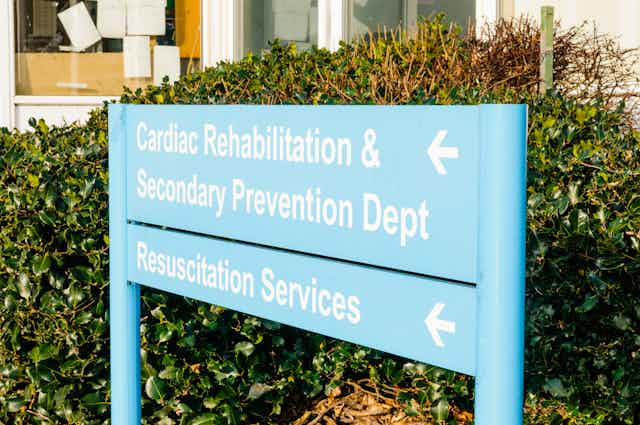The burden of noncommunicable diseases in sub-Saharan African is growing because of factors such as demographic changes and increases in life expectancy. These diseases include heart attacks, stroke, cancer, respiratory diseases and diabetes.
Poor people are more vulnerable to noncommunicable diseases and generally develop them at a younger age than their peers from high-income countries. Globally, more than half of the people with these diseases die before the age of 70. Over 80% of those premature deaths occur in low-income countries.
Public health care in sub-Saharan Africa is largely unequipped to handle the strain caused by noncommunicable diseases. The burden is therefore likely to impede poverty reduction and hamper economic growth.
One of the noncommunicable diseases that make up the burden is heart disease. This is a long-term medical condition and does not have to be fatal. About 7 million patients in sub-Saharan Africa are affected by heart disease.
Ideally, patients with heart disease should be offered cardiac rehabilitation. It is designed to help patients overcome physical inactivity, mental health problems, poor diet and smoking. These are all risk factors for cardiovascular disease.
There is growing evidence that cardiac rehabilitation helps reduce disability, prevent readmission to hospital and improve physical fitness. As a result, it’s offered as a standard part of care for many patients in developed countries.
The British Association for Cardiovascular Prevention and Rehabilitation recommends that certain “core components” form part of cardiac rehabilitation. These include health behaviour change and education; lifestyle risk factor management; psychosocial health; medical risk management; and evaluation.
In a standard cardiac rehabilitation programme, these components are delivered by a qualified multidisciplinary team, and led by a clinical coordinator. Cardiac rehabilitation is tailored to each individual’s goals and, if possible, delivered in a way that’s convenient to the patient, for example partly at home.
Our study
We looked at the availability and characteristics of cardiac rehabilitation in sub-Saharan Africa. Our study shows that cardiac rehabilitation availability in Africa was one of the worst of all the world’s regions.
We could find only 32 cardiac rehabilitation programmes. They had some form of individual screening of risk factors, some form of exercise, and at least one of the other core components recommended by the British Association. These 32 programmes could, on average, provide cardiac rehabilitation to 63 patients a year. Considering the burden of heart disease in sub-Saharan Africa, we estimated that 1.4 million more cardiac rehabilitation spots are needed annually.
What was particularly worrying was that three quarters of the programmes were in South Africa and 82% were in urban settings. None were in the public health sector. We concluded that there is a high level of inequality in the availability of cardiac rehabilitation. This is especially true for patients who rely on public health care and those in rural settings. In South Africa, 87% of the population is without medical insurance and reliant on public health care.
The 1.4 million spots needed annually seem an insurmountable hurdle. So how do we move forward?
Way forward
As illustrated, Africa is far behind the curve in managing heart disease, among others. This may contribute to African countries experiencing some of the highest levels of disability worldwide. People with disabilities are at a disadvantage in almost any sustainable development target, including food security, poverty and access to health care.
In light of this complex and high burden of disease, we propose to take the “cardiac” out of “cardiac rehabilitation” and find a way to care for patients who are at risk of a number of related conditions.
Many of the core components of cardiac rehabilitation (such as managing medical risk and supporting lifestyle changes) are equally relevant in reducing the impact of other medical conditions. An approach that centres on patients rather than diseases should be considered as a way forward. Let’s call it “health optimisation” therapy for now.
It could make better and more flexible use of resources and the health-care workforce. Community health workers could be involved. So could health professionals such as physiotherapists, by looking out for risk factors such as high blood pressure and obesity. The approach could take local challenges and cultural differences into account.
But cardiac rehabilitation or health optimisation are not the holy grail in the primary prevention of disease. The biggest reduction in disease burden will come through progress in the other sustainable development goals such as ending poverty, improving food security, quality education, water and sanitation. So the way forward is a concerted interdisciplinary effort to prevent disease and reduce disease impact.
From a research perspective, the field of rehabilitation medicine can provide high-quality evidence to support “health optimisation” programmes. Ideally, this research should be done in close collaboration with patients and communities. It should also provide evidence on the health benefits of interventions not directly related to health.

